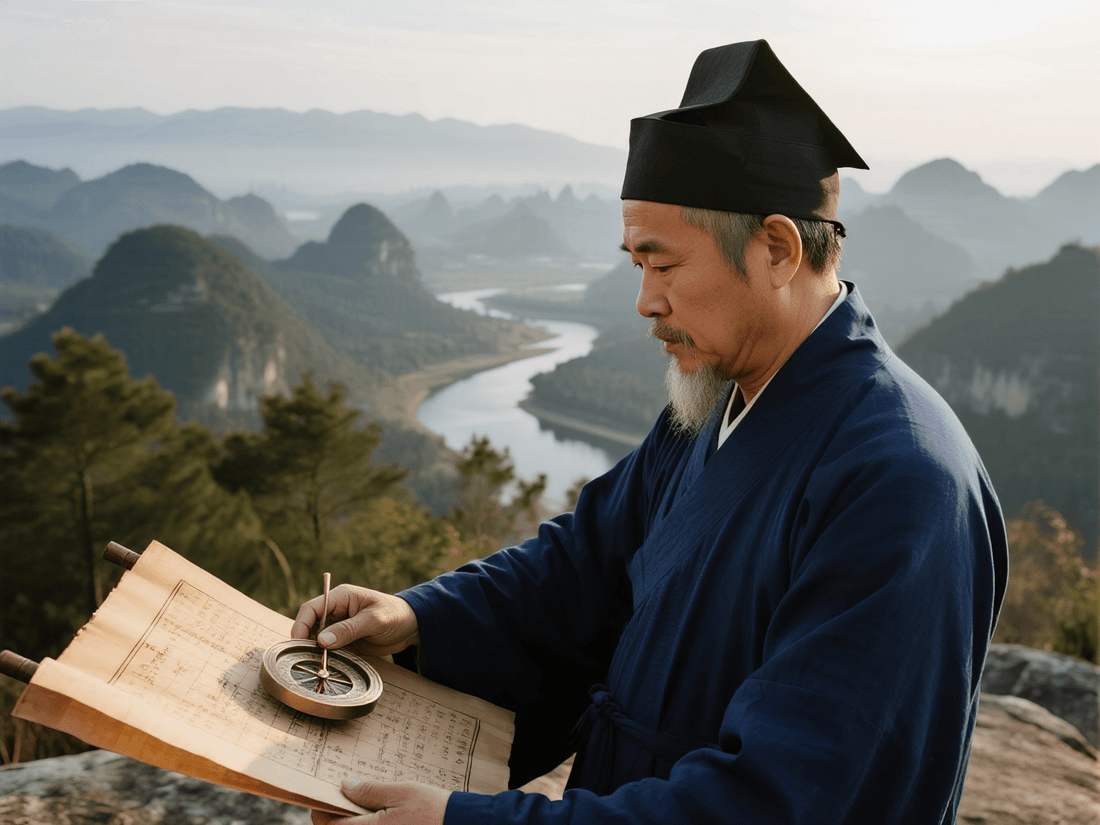
Burial Feng Shui: Top 10 Tips for Ancestral Tomb Placement
Share
Yin house Feng Shui (阴宅风水) transcends mere grave selection—it is a sacred dialogue between the living and the dead, weaving cosmic energy, ancestral reverence, and terrestrial wisdom into a practice that has shaped East Asian cultures for millennia. Rooted in the belief that tomb placement influences both the deceased’s afterlife and the descendants’ fortune, this art harmonizes dragon veins, ethical choices, and funeral traditions into a profound spatial philosophy.
1、Foundations: Qi, Dragon Veins, and Ancestor Veneration
▪Qi and the Yin House: In burial Feng Shui, the tomb is a vessel for Sheng Qi (生 气), the life force that nourishes ancestral spirits and blesses descendants. As the Zangshu (Book of Burial) states: "Qi rides the wind and scatters but gathers where water meets earth" . An ideal site retains Qi through landforms—mountains to block wind, rivers to pool energy.
▪Dragon Veins: These terrestrial energy lines (龙脉) mirror celestial patterns. Tomb placement along a vein’s "acupuncture points"—particularly where mountains coil like resting dragons—ensures dynastic longevity. For instance, Ming Dynasty emperors buried in Beijing’s Shisanling followed veins extending from Kunlun Mountains.
▪Ancestor Veneration: Selecting a tomb honors Confucian filial piety and Daoist immortality. Ancestors interred in Qi-rich sites become benevolent spirits, mediating between heaven and humanity.
2、Grave Selection: The Five Sacred Principles
Classical texts outline non-negotiable criteria:
▪Mountain-Water Configuration:
•Black Tortoise: Protective hill at the rear (stability).
•Azure Dragon & White Tiger: Gentle ridges left (east) and lower hills right (west) (balance).
•Vermilion Bird: Open space with water ahead (prosperity).
▪Taboos and Hazards:
•Avoid temples (angering deities), noisy rivers ("dragon’s roar" disturbing spirits), or neighboring graves (causing spectral conflicts).
•Sites near kilns or polluted water induce "Sha Qi," linked to family tragedies.
▪Soil and Orientation:
•Loose, aerated soil (allowing Qi circulation) facing south (yang vitality), calibrated via Luopan compass to align with astral forces.
3、Funeral Traditions: Rituals as Energy Alchemy
Han Chinese funeral traditions synchronize physical and metaphysical transitions:
▪Burial Rites: Includes cleansing, "feeding" the deceased (rice/jade in mouth), and sealing the coffin with bronze mirrors (warding evil).
▪Mourning Cycles: Post-burial "seven-week rituals" (做七) guide the soul through purgatory. Burning paper offerings symbolizes material continuity in the afterlife8
▪Geomancy Timing: Interments align with 20-year Feng Shui Periods. A Period 9 (2024–2043) burial prioritizes south-facing tombs with fire-element symbols (red stones).
4、Ethical Dilemmas: Modernity vs. Tradition
▪Land Scarcity and Ecology: Urbanization erodes dragon veins. Solutions like "symbolic veins" (using skyscrapers as mountains) spark debates about cultural dilution.
▪Cremation Controversy: Traditionalists argue ashes lack Qi-conducting bones, diminishing ancestral blessings. Yet columbaria integrate water features and orientation to mimic burial Qi dynamics.
▪Social Equity: Historically, prime dragon veins were monopolized by elites. Contemporary ethics demand accessible burial plots, repudiating class-based "geomancy privilege".
5、Global Relevance: Ancestral Wisdom in a Fractured World
▪Scientific Correlations: Studies note cortisol reduction in valley residents (Qi-retention effect), validating terrain’s impact on wellbeing.
▪Cultural Hybridization: Chinese diaspora blend burial Feng Shui with local practices. Vancouver cemeteries integrate Native totem poles as "spirit guardians".
▪Ethical Legacy: Master Lin Yun’s adage—"Tend tombs not for luck, but for gratitude"—reframes the practice: less about manipulating fate, more about honoring bonds transcending death.
Conclusion: Where Earth and Eternity Meet
Burial Feng Shui is no archaic superstition—it is a compass navigating humanity’s deepest questions: How do we honor those gone? How do spaces bind generations? By balancing dragon veins with ethical humility, we craft tombs not as monuments to fear, but as sanctuaries of continuity. As the ancients knew: To bury well is to live well.

1 comment
China Taoist culture is really profound.